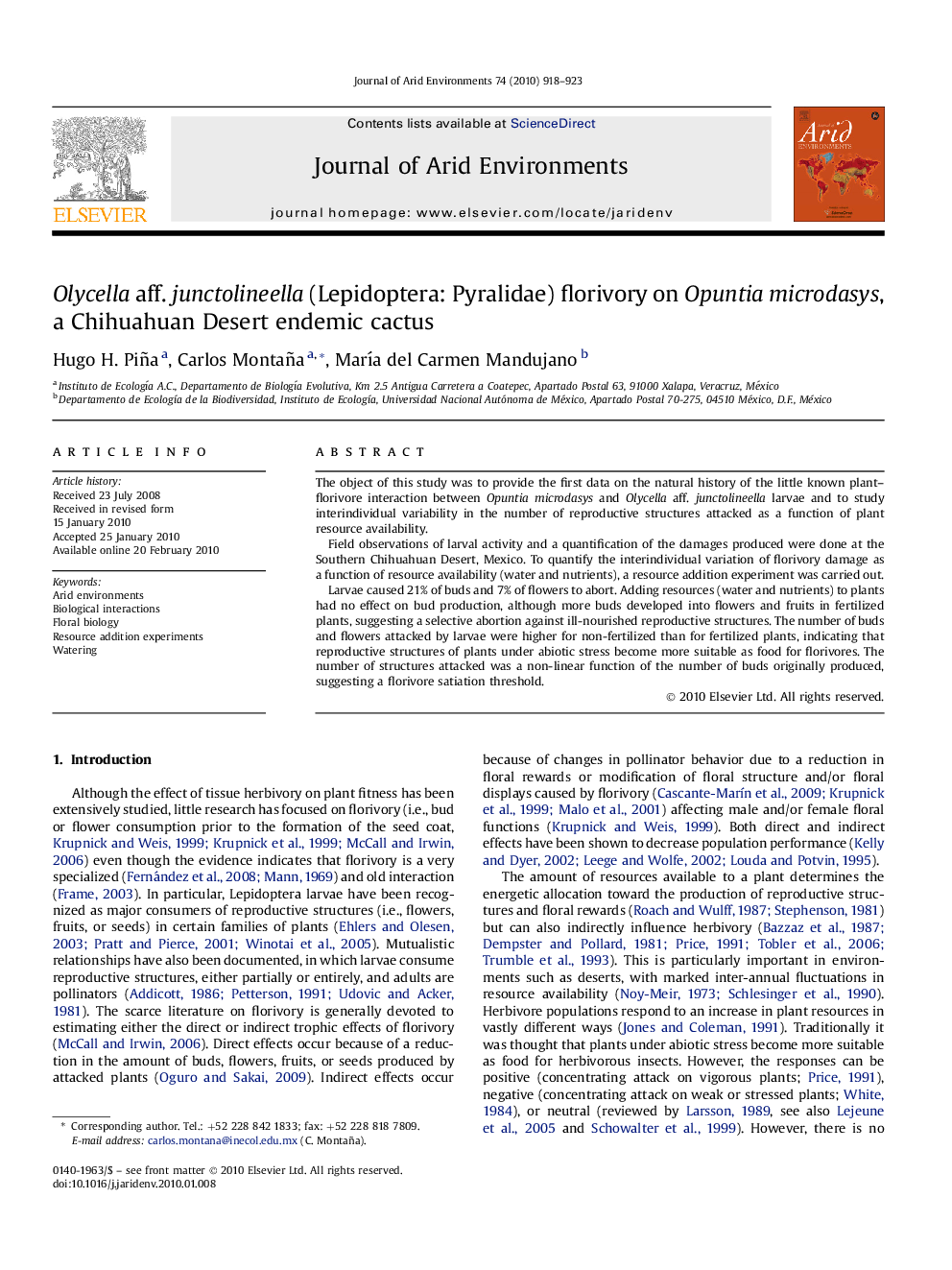| Article ID | Journal | Published Year | Pages | File Type |
|---|---|---|---|---|
| 4394025 | Journal of Arid Environments | 2010 | 6 Pages |
The object of this study was to provide the first data on the natural history of the little known plant–florivore interaction between Opuntia microdasys and Olycella aff. junctolineella larvae and to study interindividual variability in the number of reproductive structures attacked as a function of plant resource availability.Field observations of larval activity and a quantification of the damages produced were done at the Southern Chihuahuan Desert, Mexico. To quantify the interindividual variation of florivory damage as a function of resource availability (water and nutrients), a resource addition experiment was carried out.Larvae caused 21% of buds and 7% of flowers to abort. Adding resources (water and nutrients) to plants had no effect on bud production, although more buds developed into flowers and fruits in fertilized plants, suggesting a selective abortion against ill-nourished reproductive structures. The number of buds and flowers attacked by larvae were higher for non-fertilized than for fertilized plants, indicating that reproductive structures of plants under abiotic stress become more suitable as food for florivores. The number of structures attacked was a non-linear function of the number of buds originally produced, suggesting a florivore satiation threshold.
